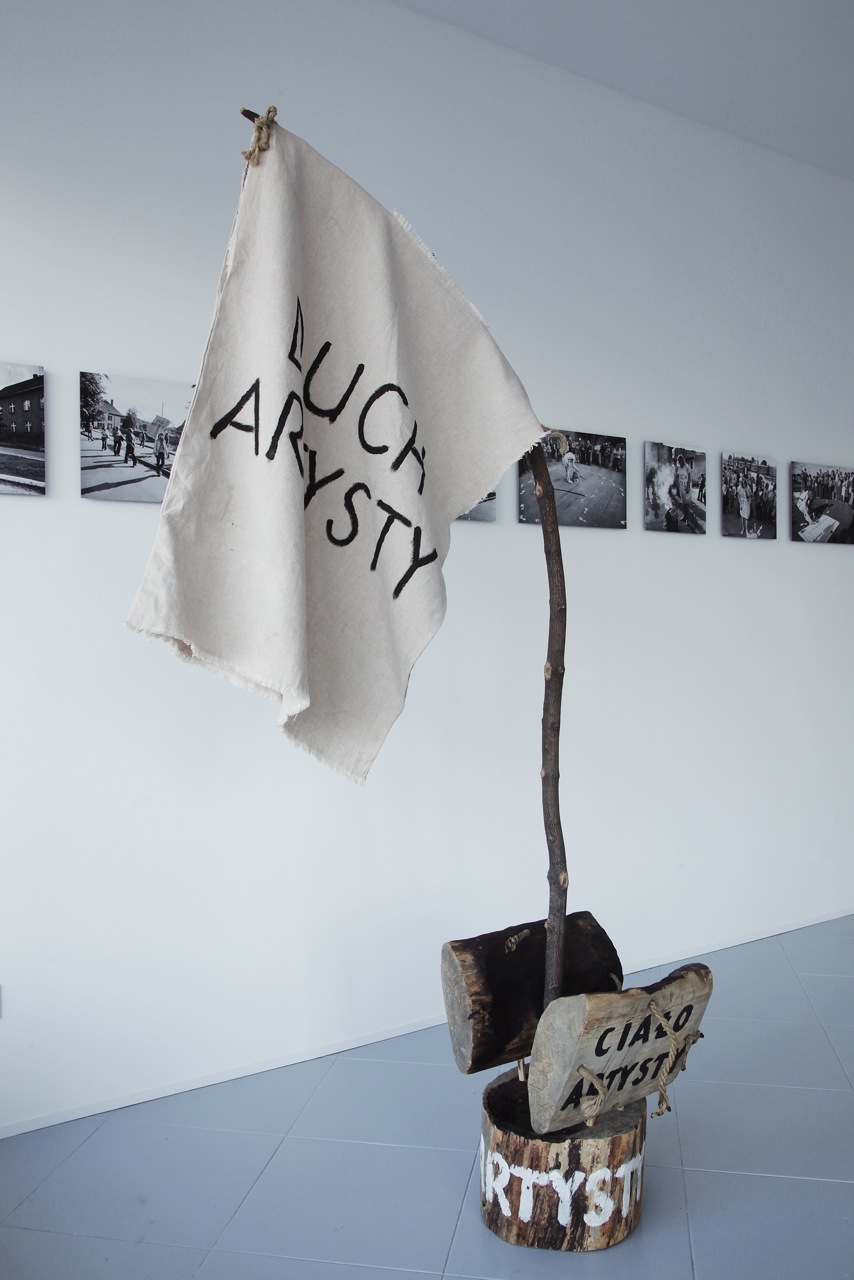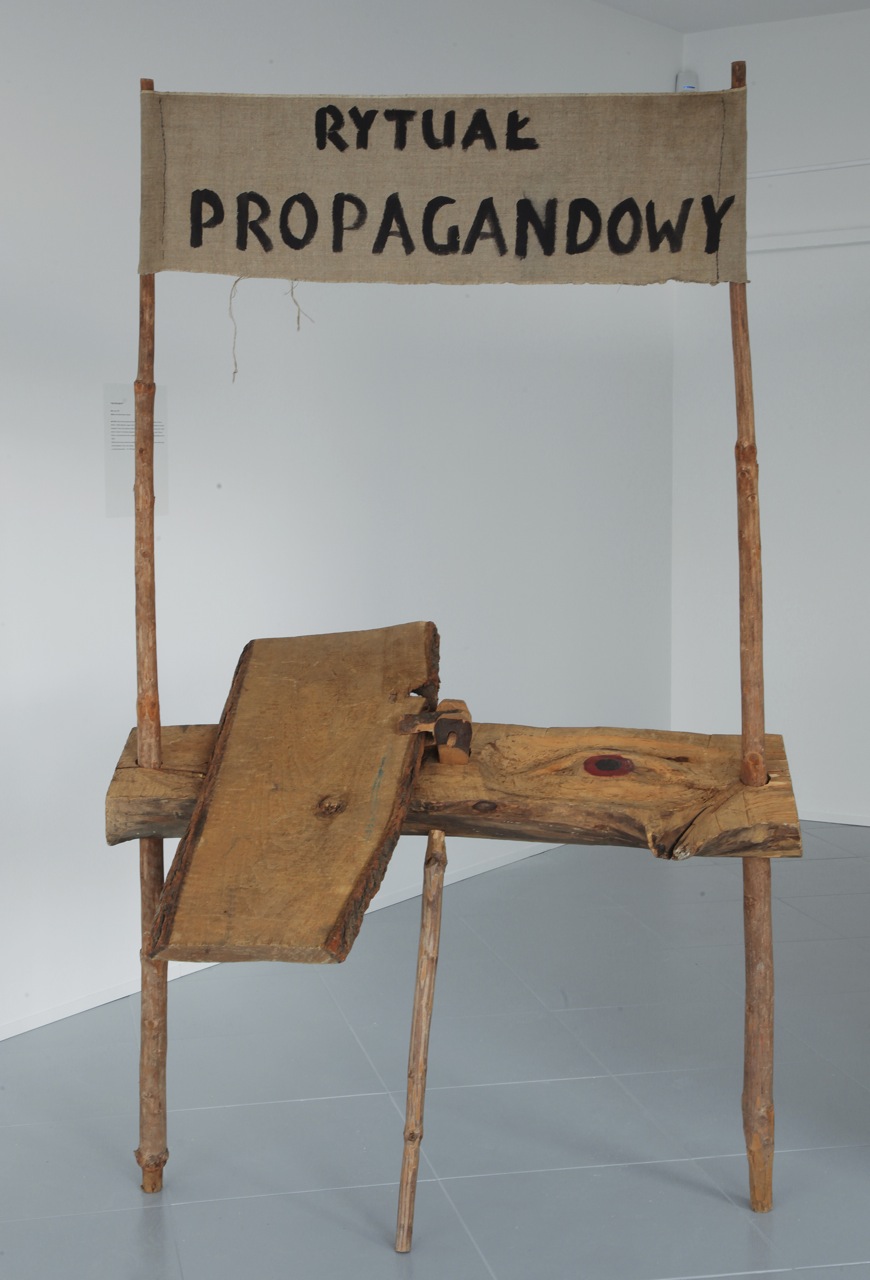Jerzy Bereś
Jerzy Bereś was born in 1930. Between 1948 and 1955 studied at the Kraków Academy of Fine Arts, his academic teachers included Xawery Dunikowski, among others. Member of the Grupa Krakowska since 1966. Representing Poland during the 9th Biennale in Sao Paulo (1967/1968).
Right after graduation, he prepared several plasters and reinforced concrete works, but by 1958, his main material of choice was wood. Starting from the first half of the nineteen sixties he started using unhewn logs, field stones, leather straps, and hemp ropes. One of the first cycles of this type, called Nightmares was presented in the Kraków Planty park in 1962, and two years later along with other works at an exhibition organized by Krzysztofory Gallery, at which he presented his output many times later on.
In August of 1967, he took part in Tadeusz Kantor’s Panoramic Marine Happening, to which he contributed two of his own projects (activities preceding the construction of the Medusa Raft and the construction of the Medusa Raft). In 1968 he was involved in his first artistic ventures (which he referred to as manifestations, avoiding such words as ‘happening’ or ‘performance’). It was called Prophecy I and initiated the series of works in which a very important role was played not only by typical sculpture elements, but also by the artist’s naked body, and sometimes the participation of the audience.
Starting from the nineteen seventies, he was involved in projects and created sculptures called Altars, Rounds, Rituals, and (mostly in the nineteen-eighties) Masses, in which he referred to historic threads, current social and political situations, as well as religious and philosophical issues.
Jerzy Bereś had the extraordinary ability to talk about important, universal things referring to both the life of an individual and the entire community, avoiding platitude, grandiloquence, gushiness, naiveté, and sententiousness, or being judgemental. He talked about freedom, conscience, truth, existence, art, ethics, and politics. (…) He also talked a lot about himself, always with a great deal of self-mockery. He engaged in an artistic dialogue with Duchamp, Witkacy, and Kantor, in a dispute over superior values.
Jerzy Hanusek
The simplicity of materials used in combination with the use of his own body added a very primal and ritual character to his works. The artist played there the symbolic role of a shaman, a priest performing rituals, and scarifying his physical suffering in order to get into touch with the spiritual and the metaphysical.
His works were presented during such crucial thematic exhibitions as Romanticism and Romance in the Polish Art of the 19th and 20th Century (1975/76), The Poles’ Self-Portrait, 1979/80) or What is the Use of an Artist in Bad Times? (1990/91). A monographic presentation of his artistic output entitled Nightmares. Oracles. Altars. Challenges was held at the Poznań National Museum in 1995.
His works are in the collection of National Museums in Kraków, Warsaw, Wrocław, Łódź, Poznań, MOCAK in Kraków, Łódź, Zachęta in Warsaw, Polish Sculpture Centre in Orońsko, CSW in Warsaw, as well as Stedelijk Museum in Amsterdam, Museum in Bochum, Louisiana Museum of Modern Art w Humlebaek, Museum of Modern Art in Ljubljana, Würth Museum in Künzeslau, Wilhelm-Lehmbruck Museum der Stadt in Duisburg, Hisrshorn Museum in Washington, and are owned by private art collectors.
Jerzy Bereś died in 2012.



